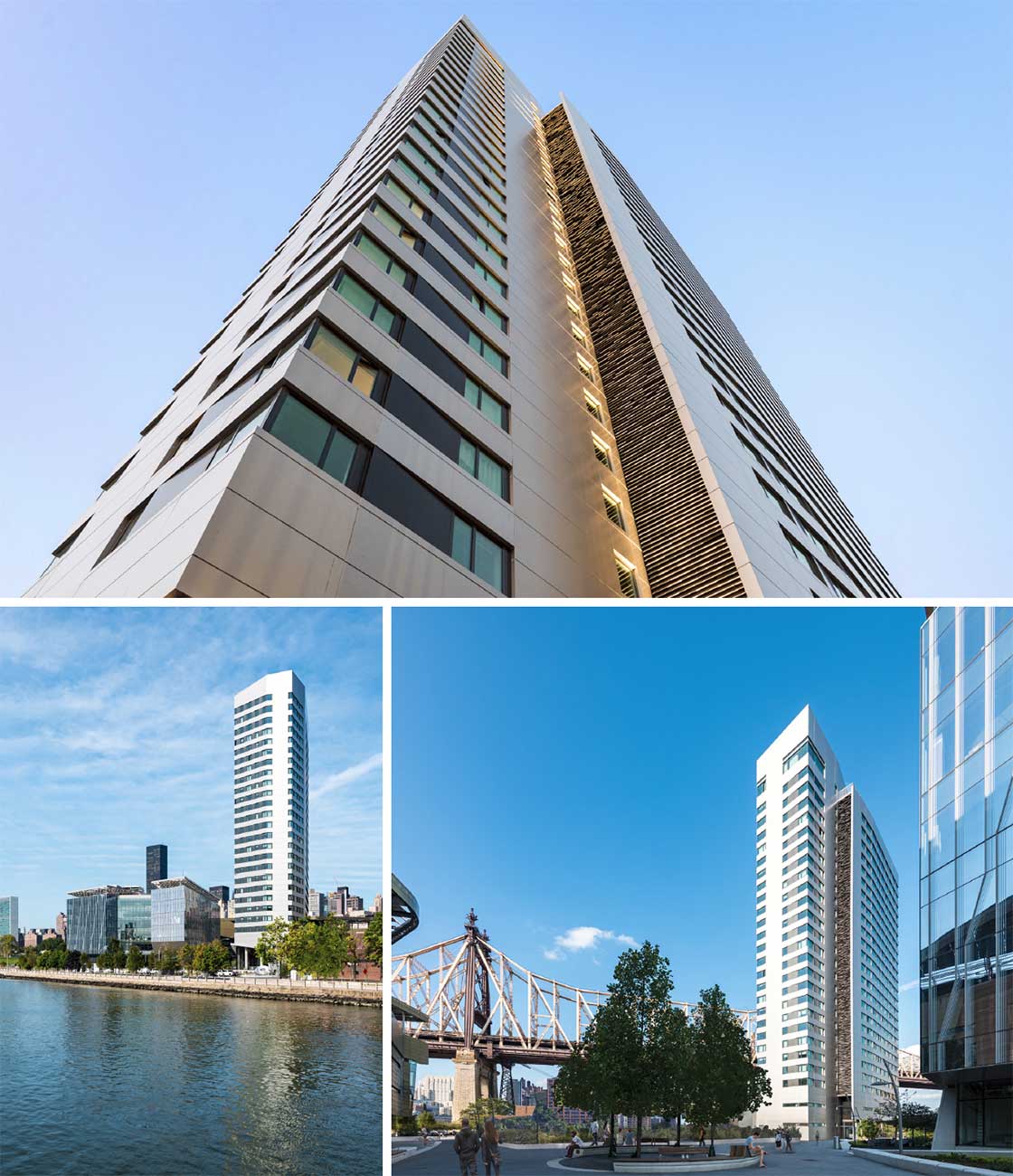Project Type
Certification
Date
2017
Location
Roosevelt Island, New York City, USA
The House at Cornell Tech
Standing 26 storeys tall on Roosevelt Island in the East River, The House at Cornell Tech redefined the potential of sustainable high-rise living. At the time of its completion, it was the tallest and largest residential Passive House certified building in the world.
Designed by Handel Architects, the 352-unit student dormitory provides an inclusive, energy-efficient home for students, staff, and faculty, aligned with Cornell’s vision of social and intellectual connectivity.
Mosart acted as the official Passive House Certifier, overseeing energy modelling, thermal bridge analysis, and airtightness verification for this landmark project. With external temperatures ranging from -5°C in winter to 30°C in summer, maintaining comfort and performance in a building of this scale posed significant technical challenges.
Airtightness testing was conducted in phases across the tower. Each apartment is connected to a centralised mechanical ventilation system with heat recovery, ensuring fresh, filtered air circulates continuously—delivering exceptional indoor comfort and air quality while minimising energy loss.
The building envelope was designed to strict Passivhaus standards, with prefabricated insulated panels and a high-performance façade supported by BuroHappold’s structural, MEP, and lighting expertise. To maintain the integrity of the thermal envelope, even the mechanical rooms feature walk-in freezer-grade doors.
Just 25% of the external envelope consists of transparent elements, optimising heat retention and solar performance. Three energy recovery ventilators serve the entire tower, enabling neutral airflow: stale air is extracted from kitchens and bathrooms, while fresh air is delivered to living and sleeping areas. Residents maintain personal control of temperature via zoned, refrigerant-based systems and individual fan units.
Designed as a living laboratory for sustainable architecture, The House includes plans for a live energy-consumption display in the lobby, reinforcing its role as both a home and an educational tool for eco-conscious living.





